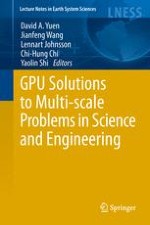2013 | Buch
GPU Solutions to Multi-scale Problems in Science and Engineering
herausgegeben von: David A. Yuen, Long Wang, Xuebin Chi, Lennart Johnsson, Wei Ge, Yaolin Shi
Verlag: Springer Berlin Heidelberg
Buchreihe : Lecture Notes in Earth System Sciences
